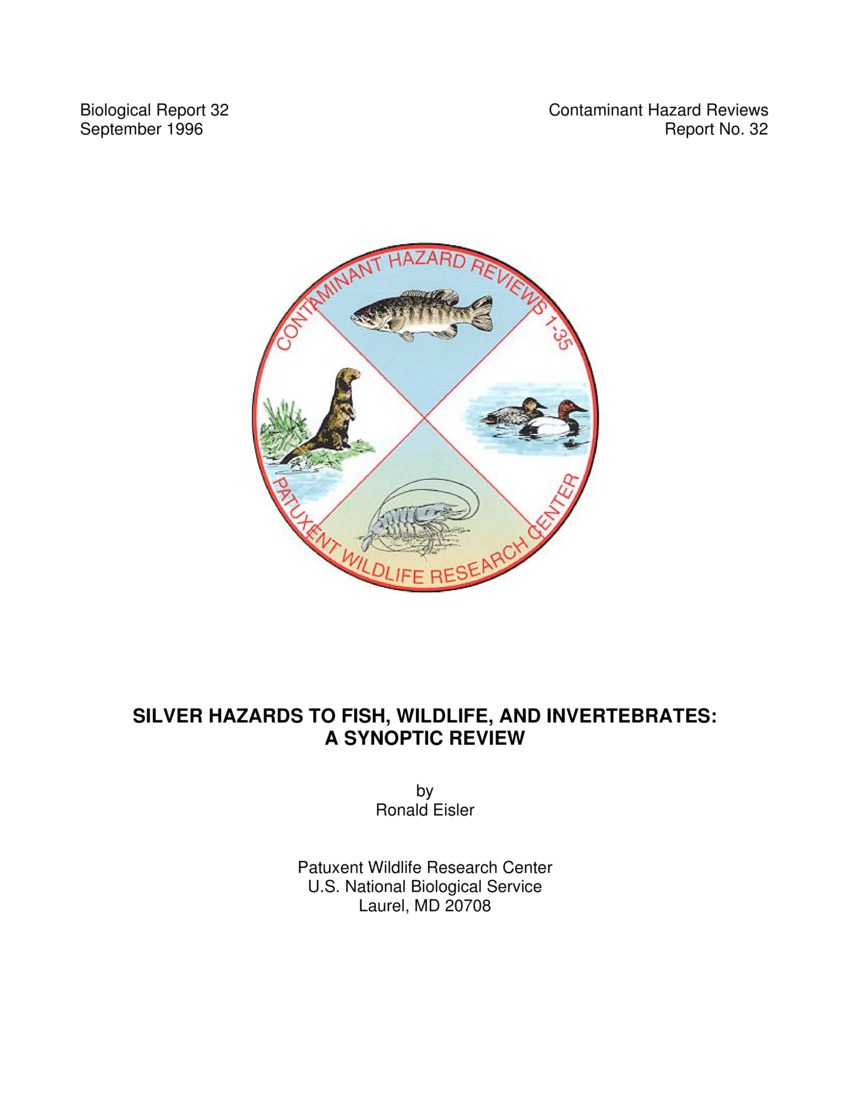Silver Hazards to Fish, Wildlife, and Invertebrates: A Synoptic Review
Ecological and toxicological aspects of silver (Ag) and silver salts in the environment are briefly summarized with an emphasis on natural resources. Subtopics include sources and uses, chemistry and metabolism, concentrations in field collections, lethal and sublethal effects, and recommendations for the protection of natural resources. Elevated silver concentrations in biota occur in the vicinities of sewage outfalls, electroplating plants, mine waste sites, and silver-iodide seeded areas; in the United States, the photography industry is the major source of anthropogenic silver discharges into the biosphere. Maximum concentrations recorded in field collections, in milligrams total silver/kilogram dry weight (tissue), were 1.5 in mammals (liver), 6 in fish (bone), 14 in plants (whole), 30 in annelid worms (whole), 44 in birds (liver), 110 in mushrooms (whole), 185 in bivalve mollusks (soft parts), and 320 in gastropods (whole); humans afflicted with silver poisoning (argyria) contained 72 mg total Ag/kg dry weight skin and 1,300 mg total Ag/kg fresh weight whole body. Silver and its compounds are not known to be mutagenic, teratogenic, or carcinogenic. Under normal routes of exposure, silver does not pose serious environmental health problems to humans at less than 50 μg total Ag/L drinking water or 10 μg total Ag/m3 air. Free silver ion, however, was lethal to representative species of sensitive aquatic plants, invertebrates, and teleosts at nominal water concentrations of 1.2 to 4.9 μg/L; at sublethal concentrations, adverse effects were significant between 0.17 and 0.6 μg/L. No data were found on effects of silver on avian or mammalian wildlife; all studied effects were on poultry, small laboratory animals, and livestock. Silver was harmful to poultry at concentrations as low as 1.8 mg total Ag/kg whole egg fresh weight by way of injection, 100 mg total Ag/L in drinking water, or 200 mg total Ag/kg in diets; sensitive mammals were adversely affected at total silver concentrations as low as 250 μg/L in drinking water, 6 mg/kg in diets, or 13.9 mg/kg whole body. Proposed criteria for the protection of living organisms from silver are listed and discussed.
Publisher - U.S. Fish and Wildlife Service (USFWS)
Subjects - Contaminants; Chemical, Silver
Citation: Eisler R. 1996. Silver Hazards to Fish, Wildlife, and Invertebrates: A Synoptic Review. Laurel (MD): U.S. Fish and Wildlife Service (USFWS); 32. 63 pp http://www.pwrc.usgs.gov/infobase/eisler/CHR_32_Silver.pdf
